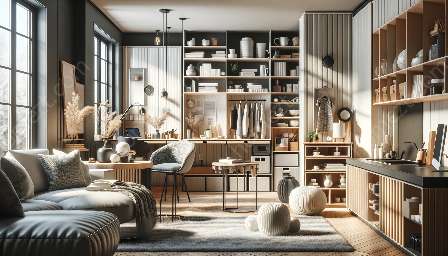Functional Analysis: Optimizing Spaces and Enhancing Comfort, Usability, and Aesthetics
Introduction
Functional analysis is a crucial aspect of interior design and home furnishings as it focuses on optimizing spaces and enhancing the usability, comfort, and aesthetics of residential and commercial environments. It involves the systematic evaluation of how people interact with their living or working spaces, and the integration of design solutions to meet their needs effectively. This approach goes beyond just the aesthetic appeal of a space and delves deep into making it more usable, functional, and pleasing to the senses.
Understanding Functional Analysis
Functional analysis in interior design and home furnishings is essentially a problem-solving process. It involves analyzing how people use and navigate through a space, identifying inefficiencies or limitations, and creating solutions that improve the functionality and aesthetic appeal. This process requires a comprehensive understanding of human behavior, spatial planning, and the use of appropriate materials and furnishings.
One of the key principles of functional analysis is to align the design elements with the specific needs and behaviors of the individuals who will use the space. By understanding the habits, preferences, and routines of the occupants, designers can tailor the space to enhance its functionality and create a more comfortable and efficient environment.
Application in Interior Design
In interior design, functional analysis informs the layout, circulation, and use of spaces within a building. It facilitates the creation of efficient floor plans, ergonomic furniture arrangements, and integrated storage solutions that maximize usability while maintaining a visually appealing environment. Additionally, it helps in the selection of materials and finishes that are both durable and aesthetically pleasing, ensuring the longevity and beauty of the designed spaces.
Furthermore, functional analysis plays a critical role in the design of kitchens, bathrooms, and other functional spaces within a home. By considering the specific activities and requirements associated with each area, designers can create custom solutions that optimize the functionality and enhance the overall user experience.
Integration in Home Furnishings
When it comes to home furnishings, functional analysis guides the selection of furniture, lighting, and accessories that not only complement the design but also serve a practical purpose. The choice of furnishings is based on their ability to improve the functionality and comfort of the space, without compromising on style and visual appeal.
Furniture pieces designed through functional analysis often incorporate features such as multi-functionality, space-saving designs, and ergonomic considerations to better serve the users' needs. This approach ensures that every piece of furniture contributes to the overall functionality and aesthetics of the space, creating a harmonious and cohesive interior environment.
Conclusion
Functional analysis is a fundamental aspect of interior design and home furnishings, allowing designers to create spaces that are not only visually appealing but also highly functional and comfortable. By understanding the needs and behaviors of the users, this approach enables the creation of spaces that enhance the overall quality of life and improve the user experience. From efficient space planning to the selection of practical furnishings, functional analysis plays a vital role in shaping modern interior environments.



